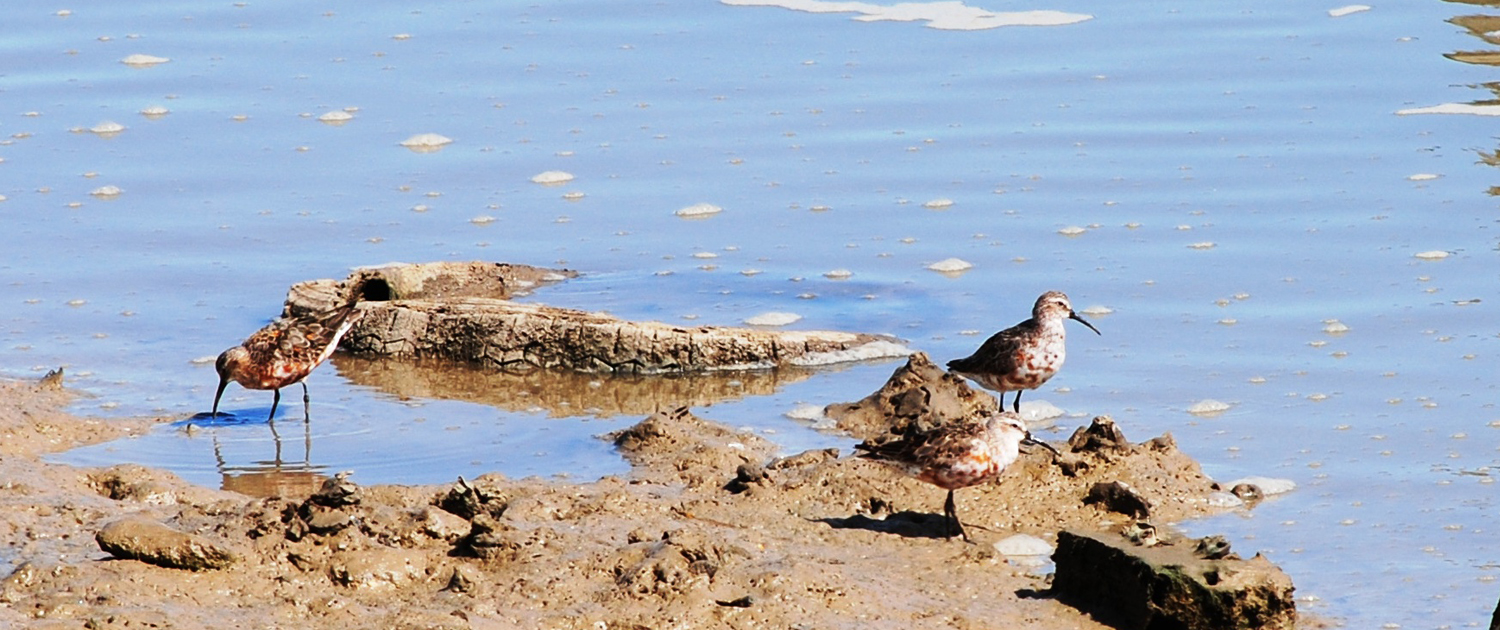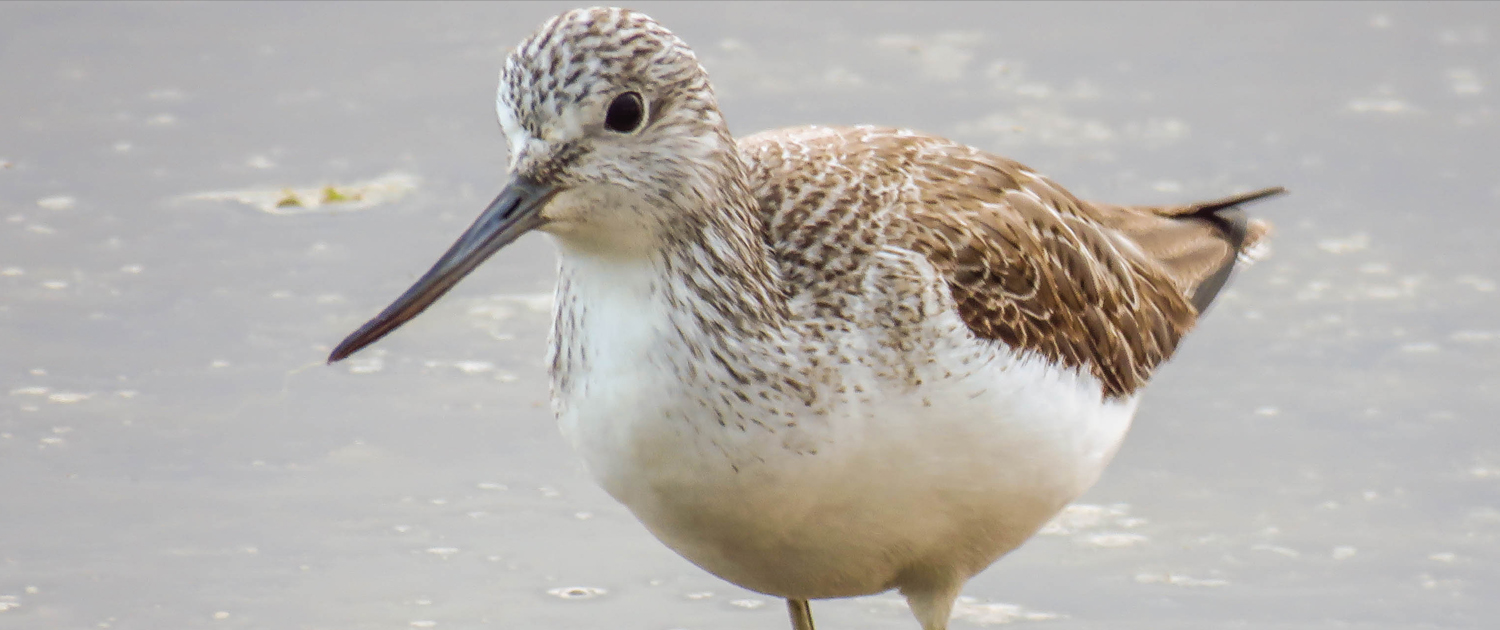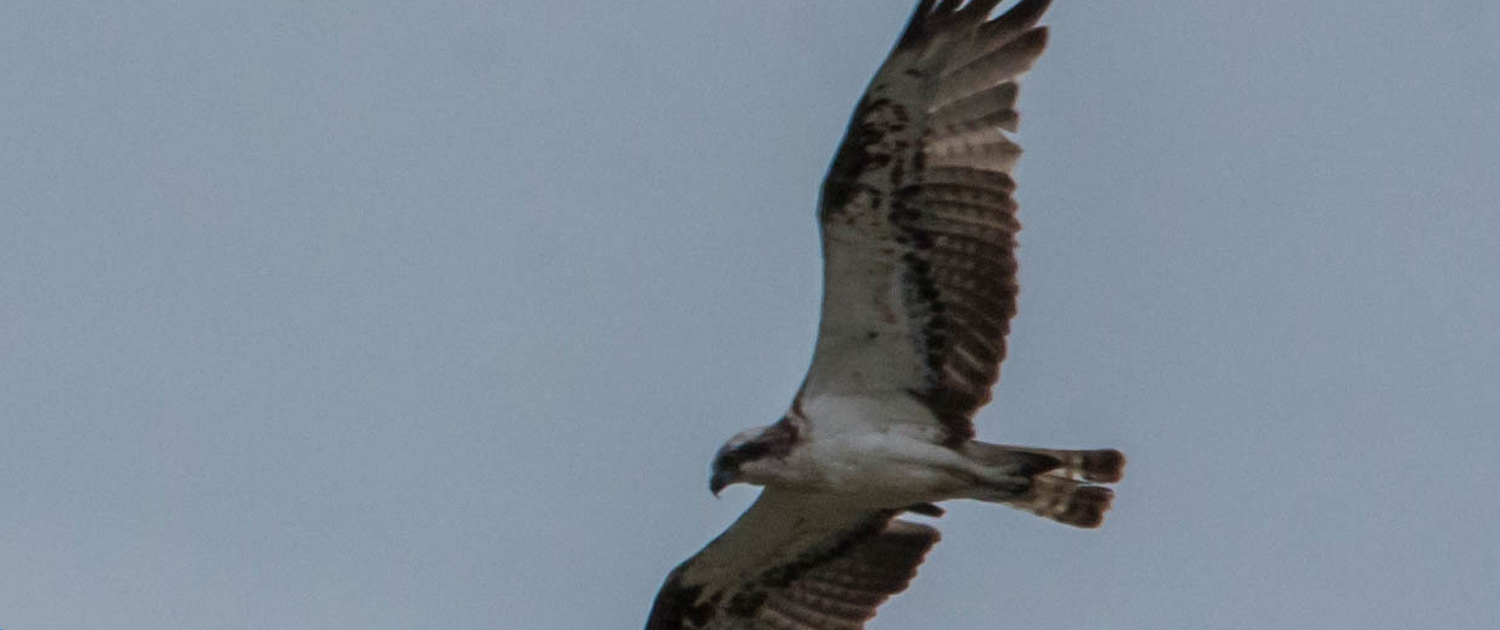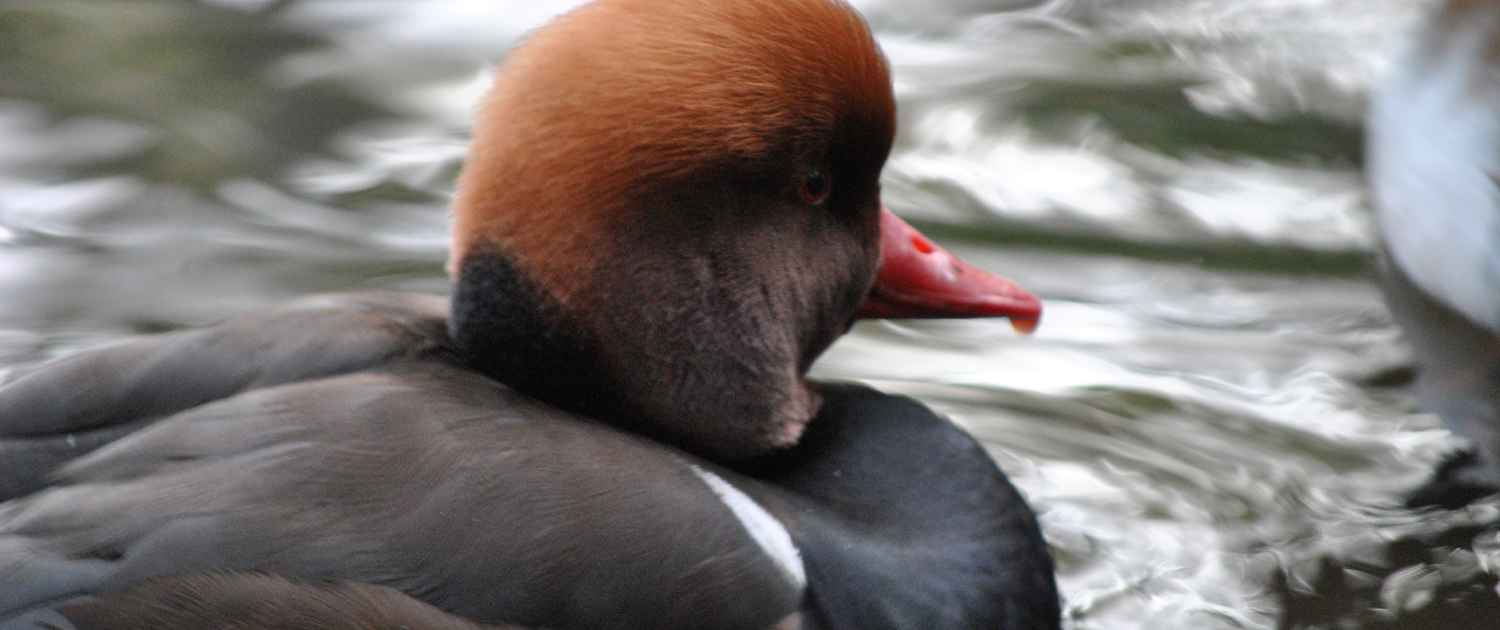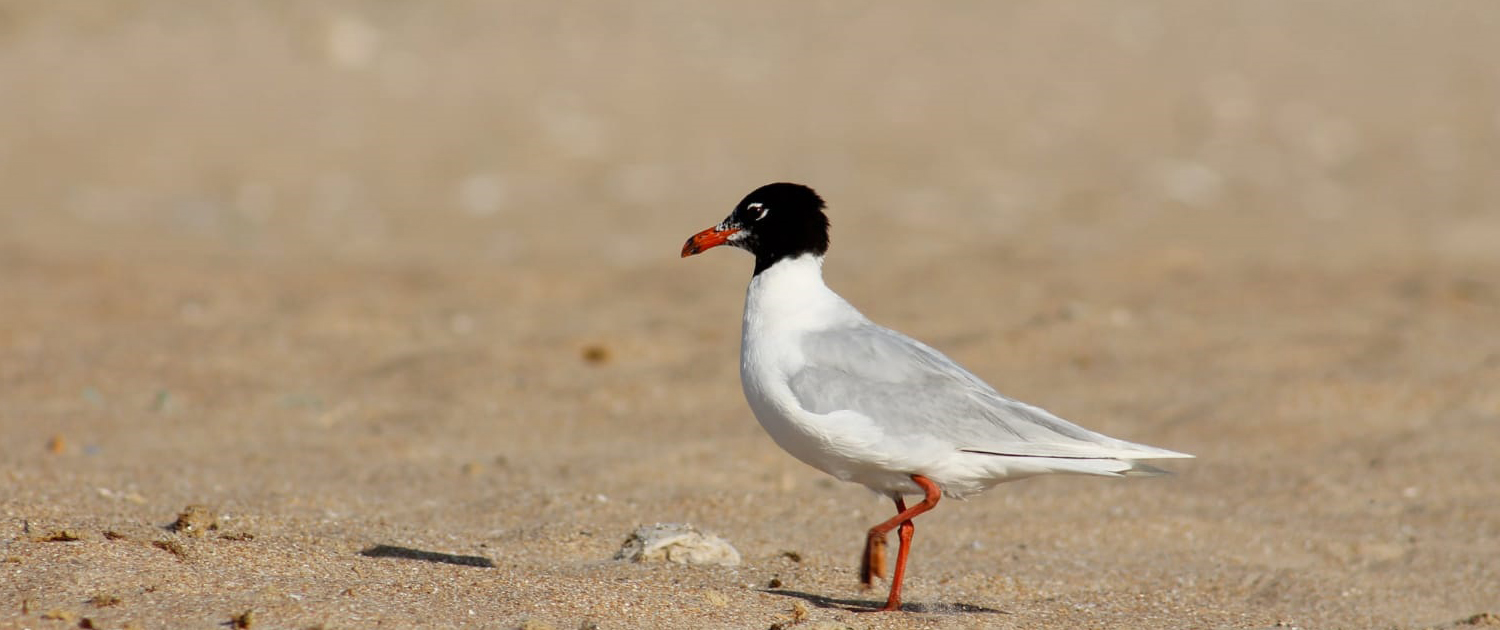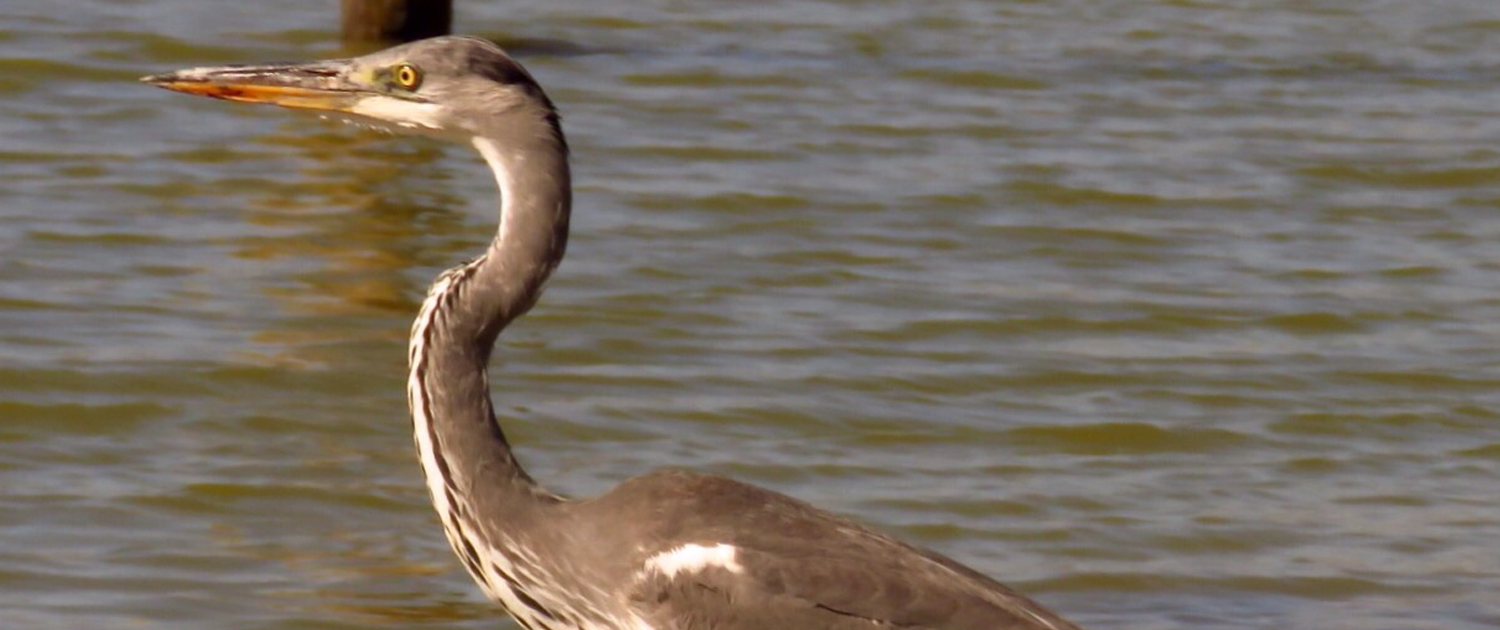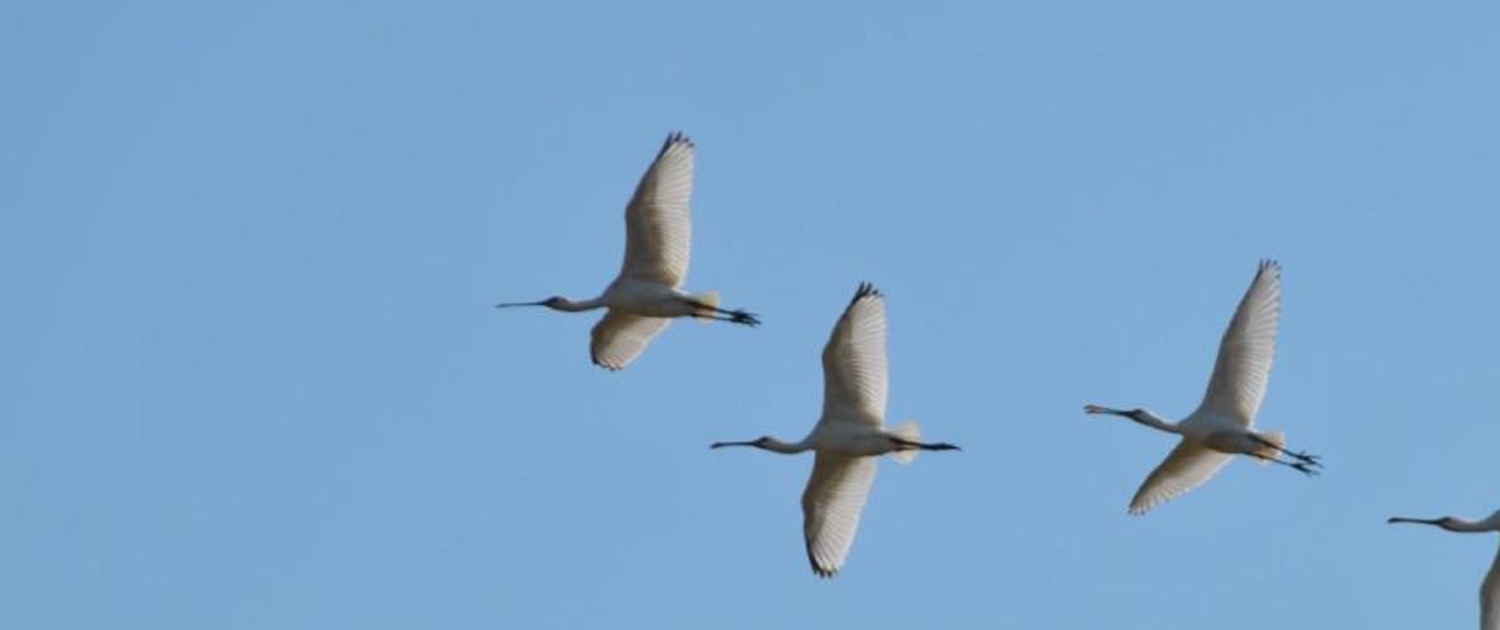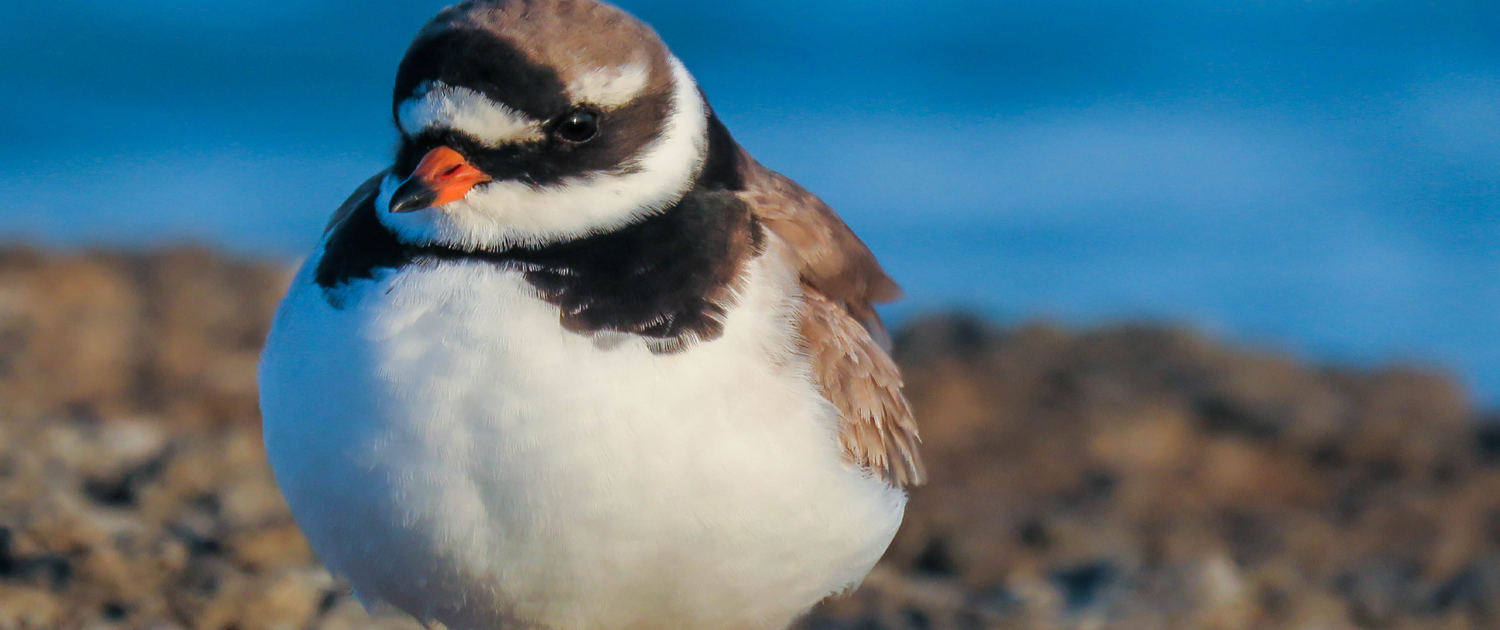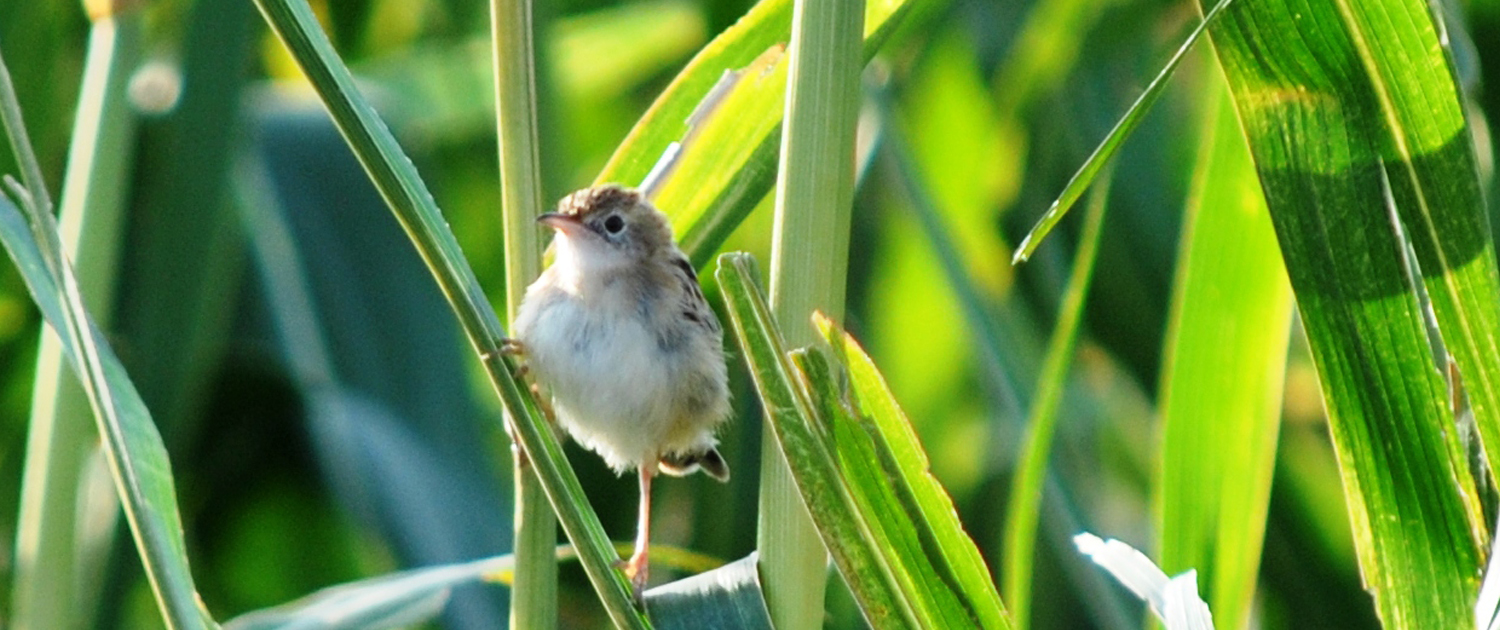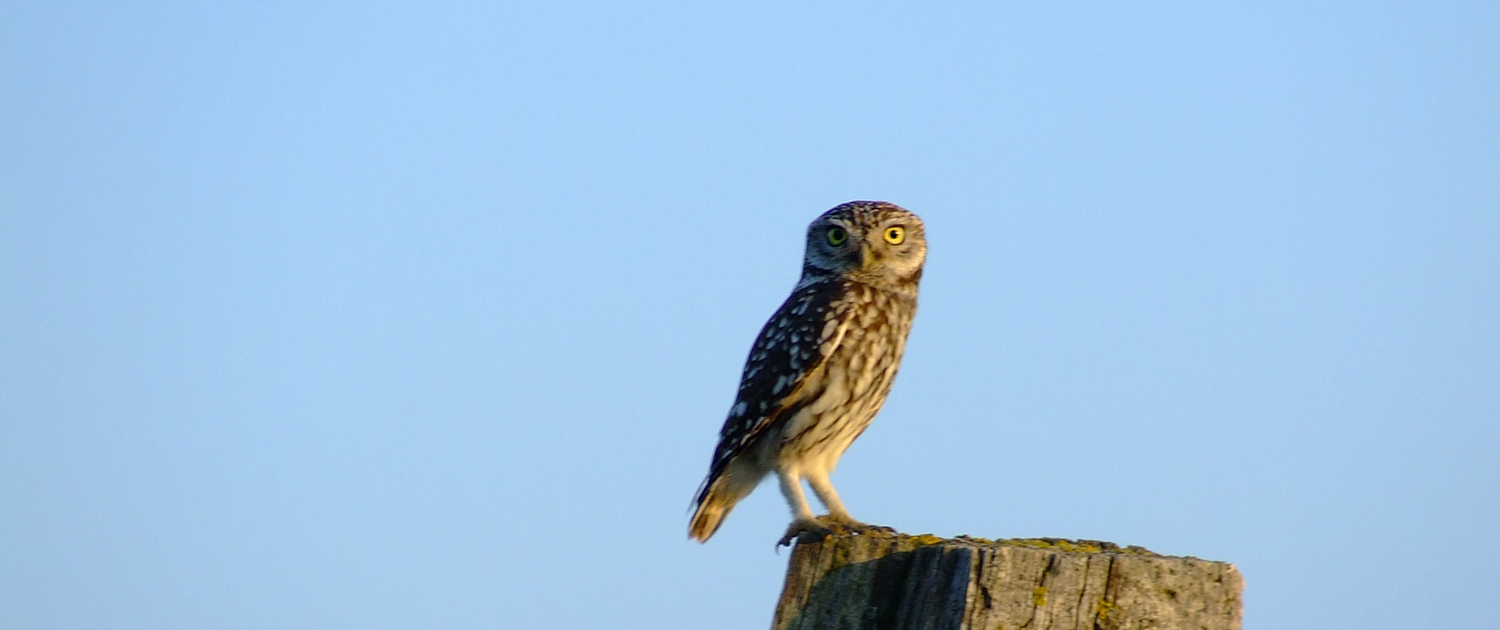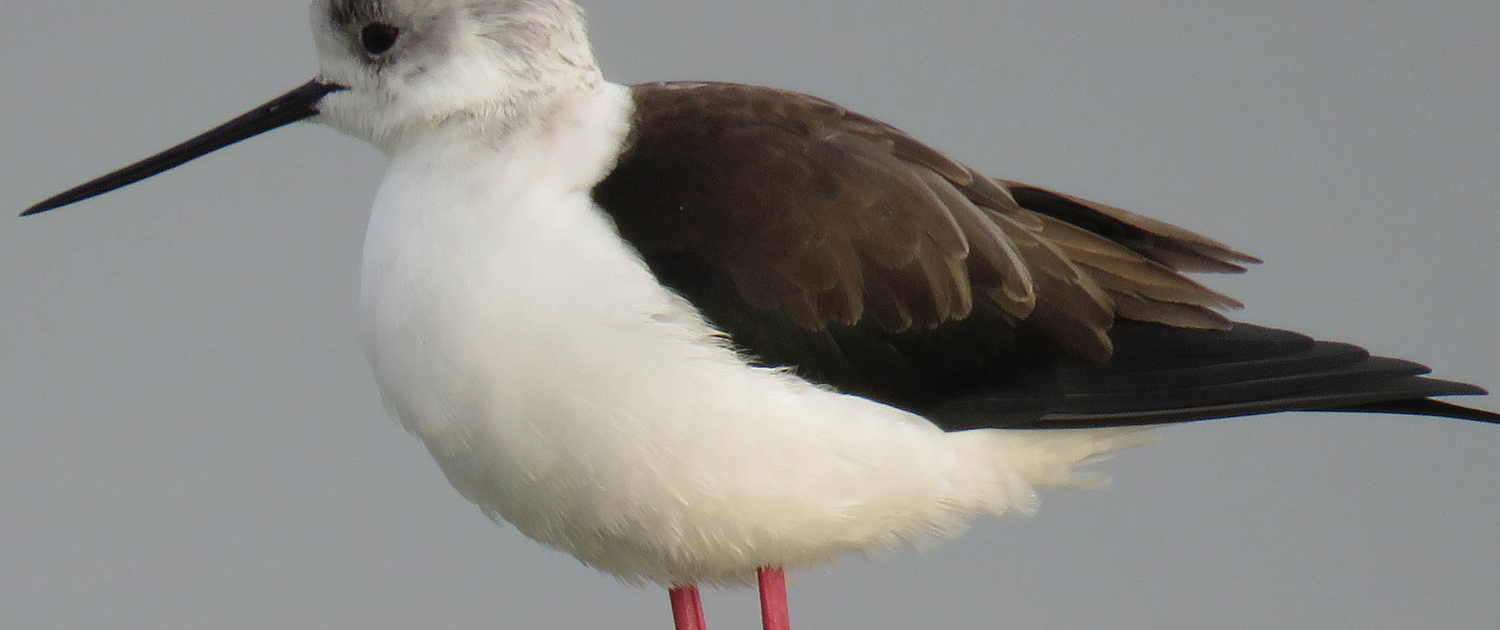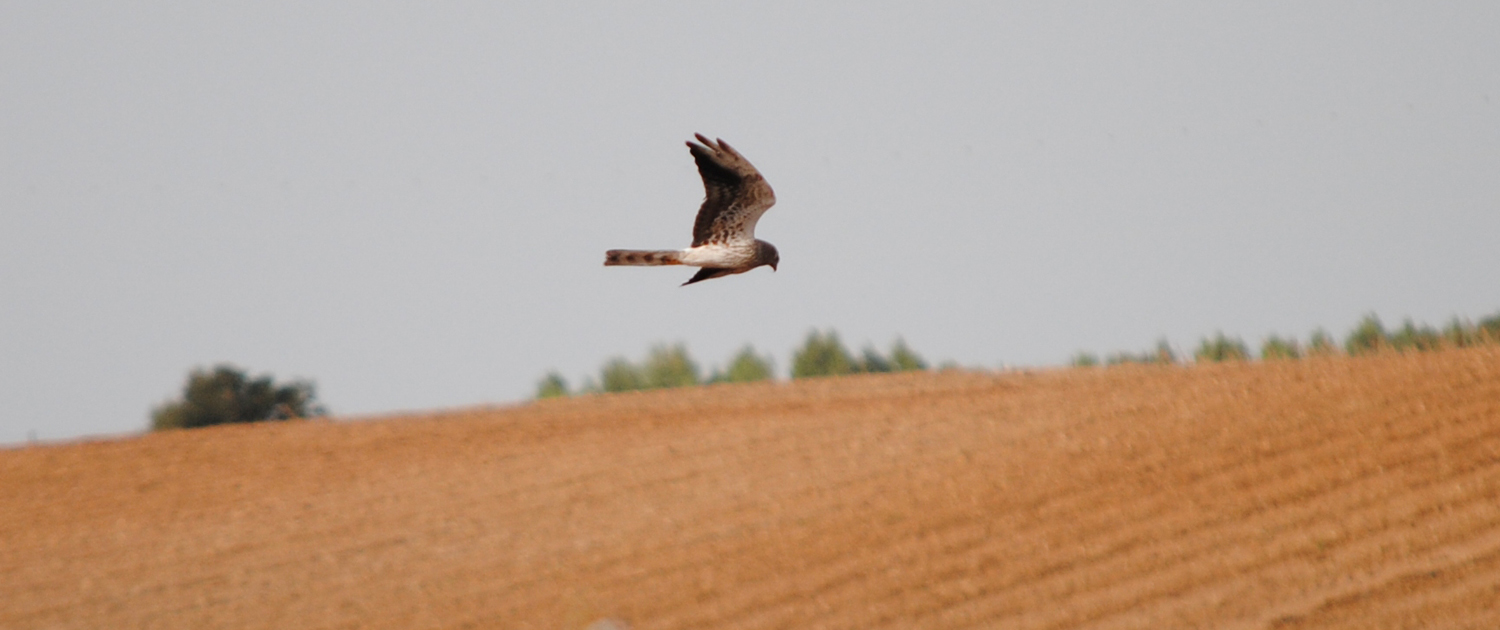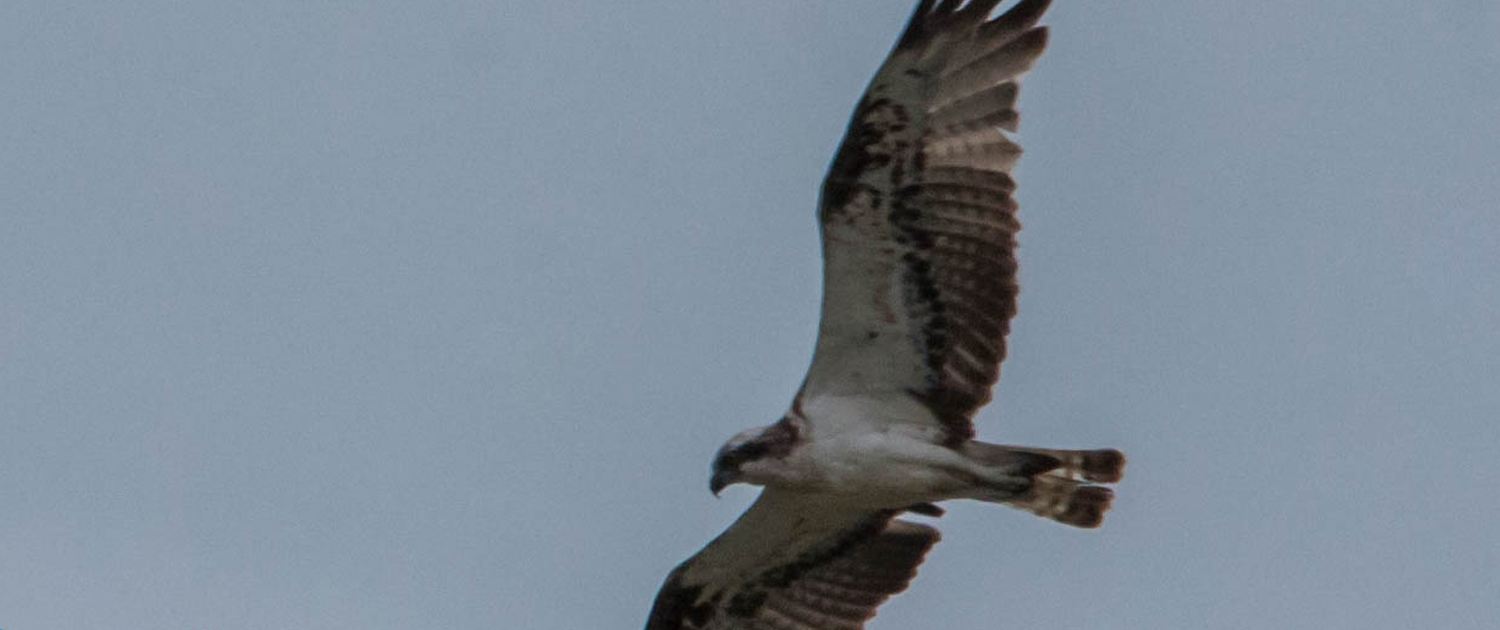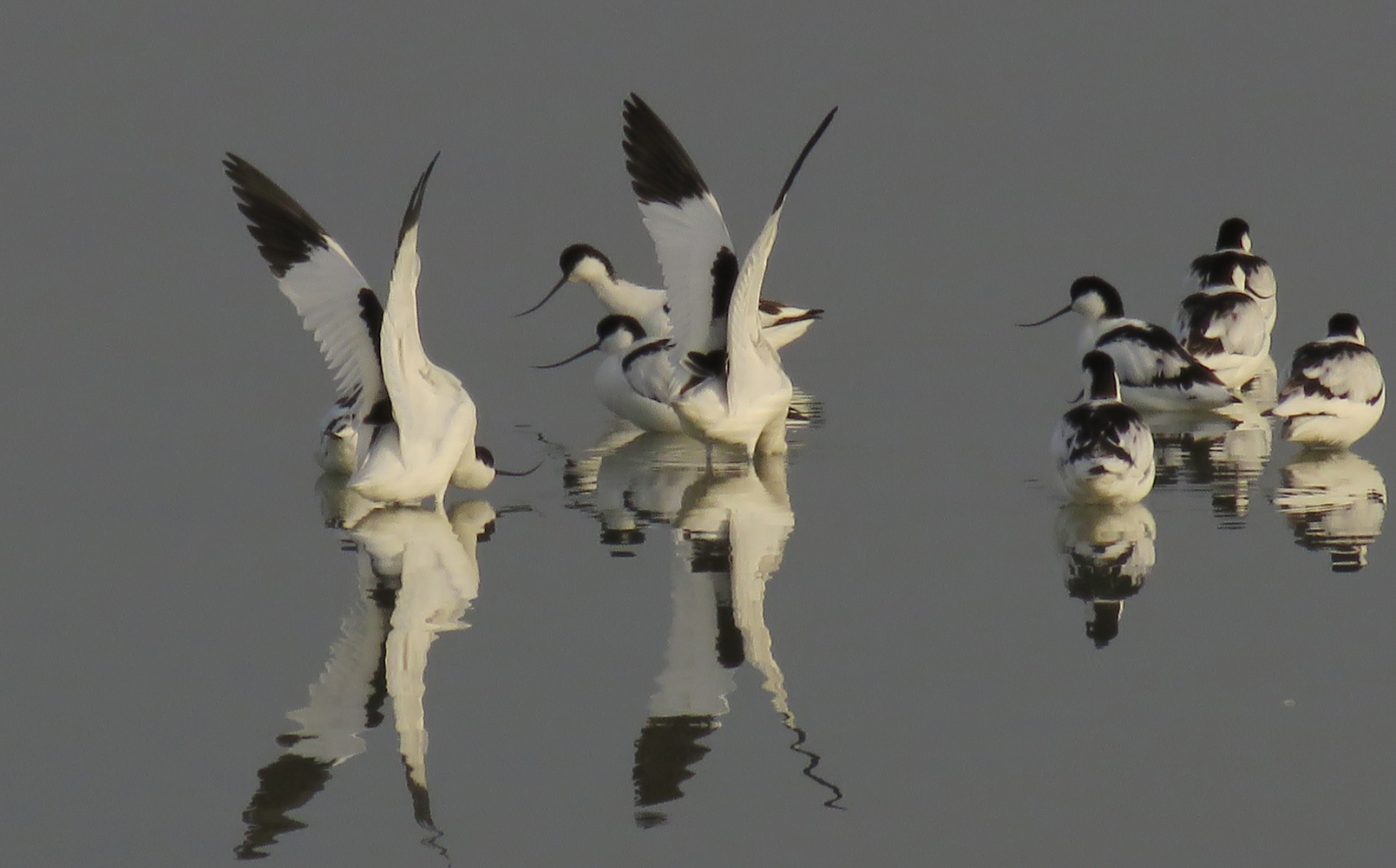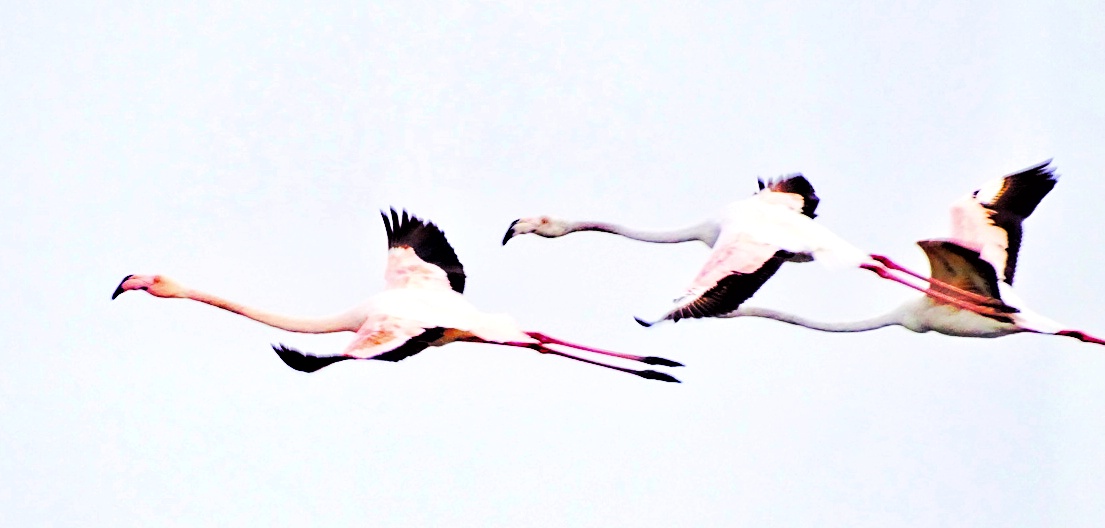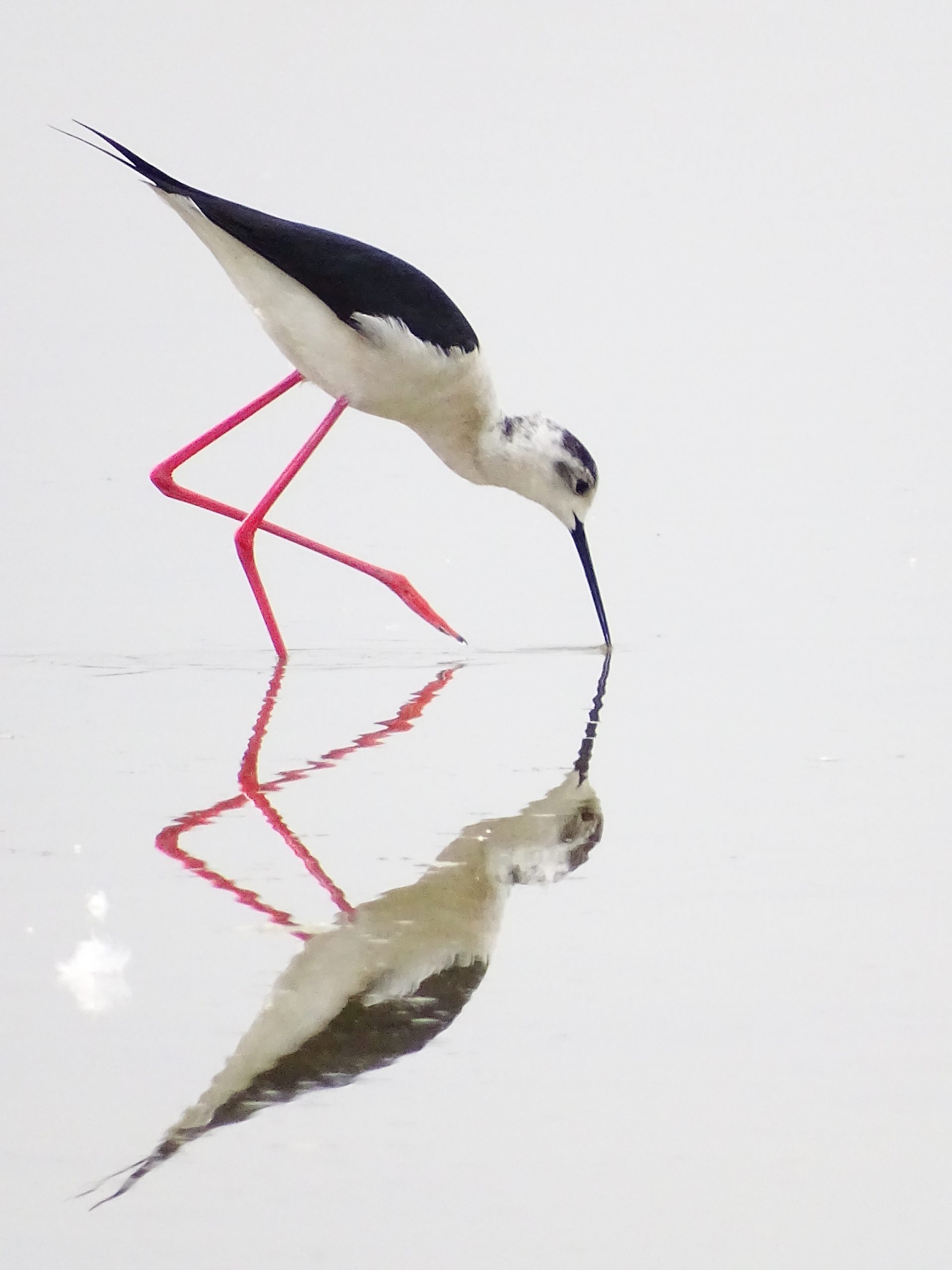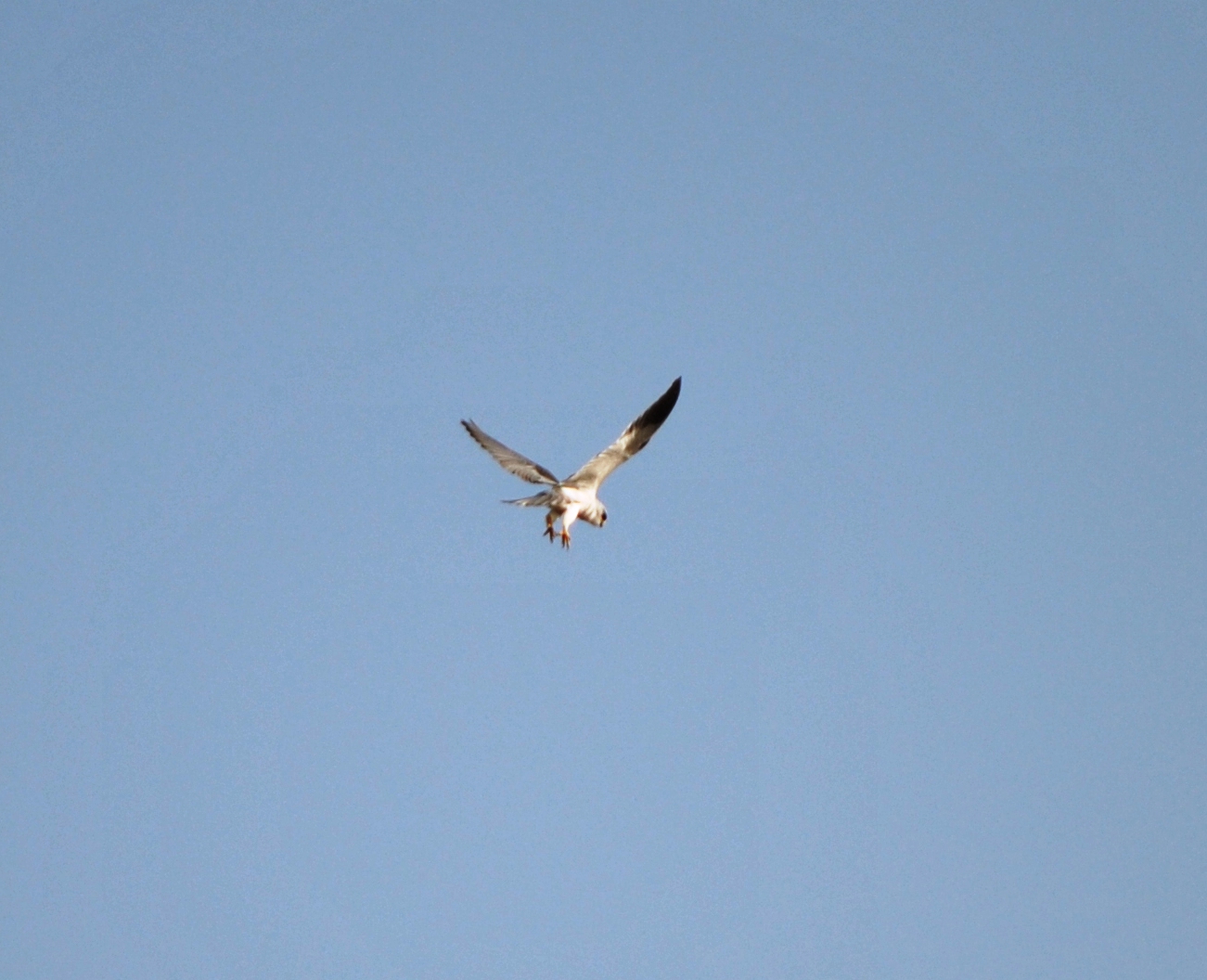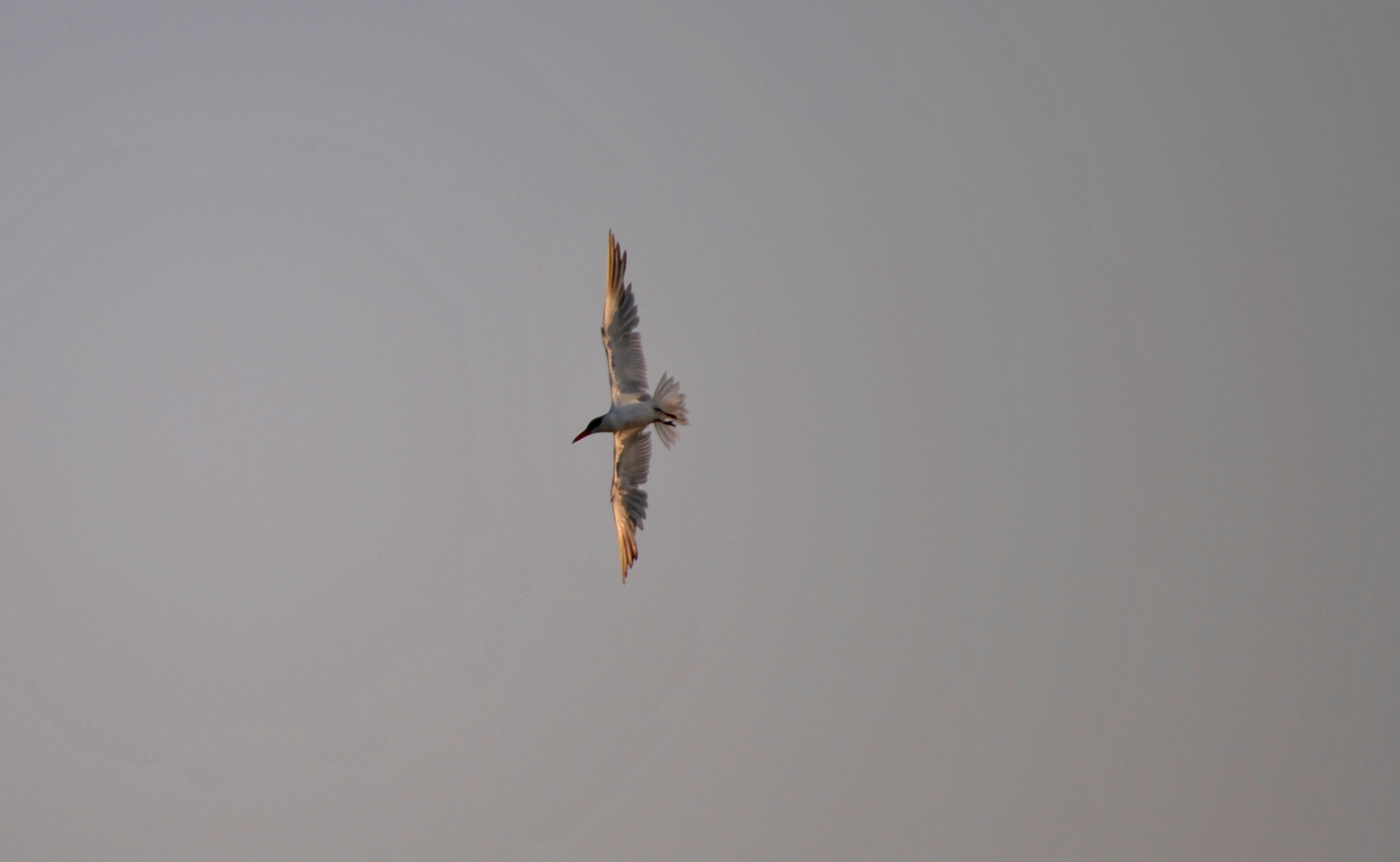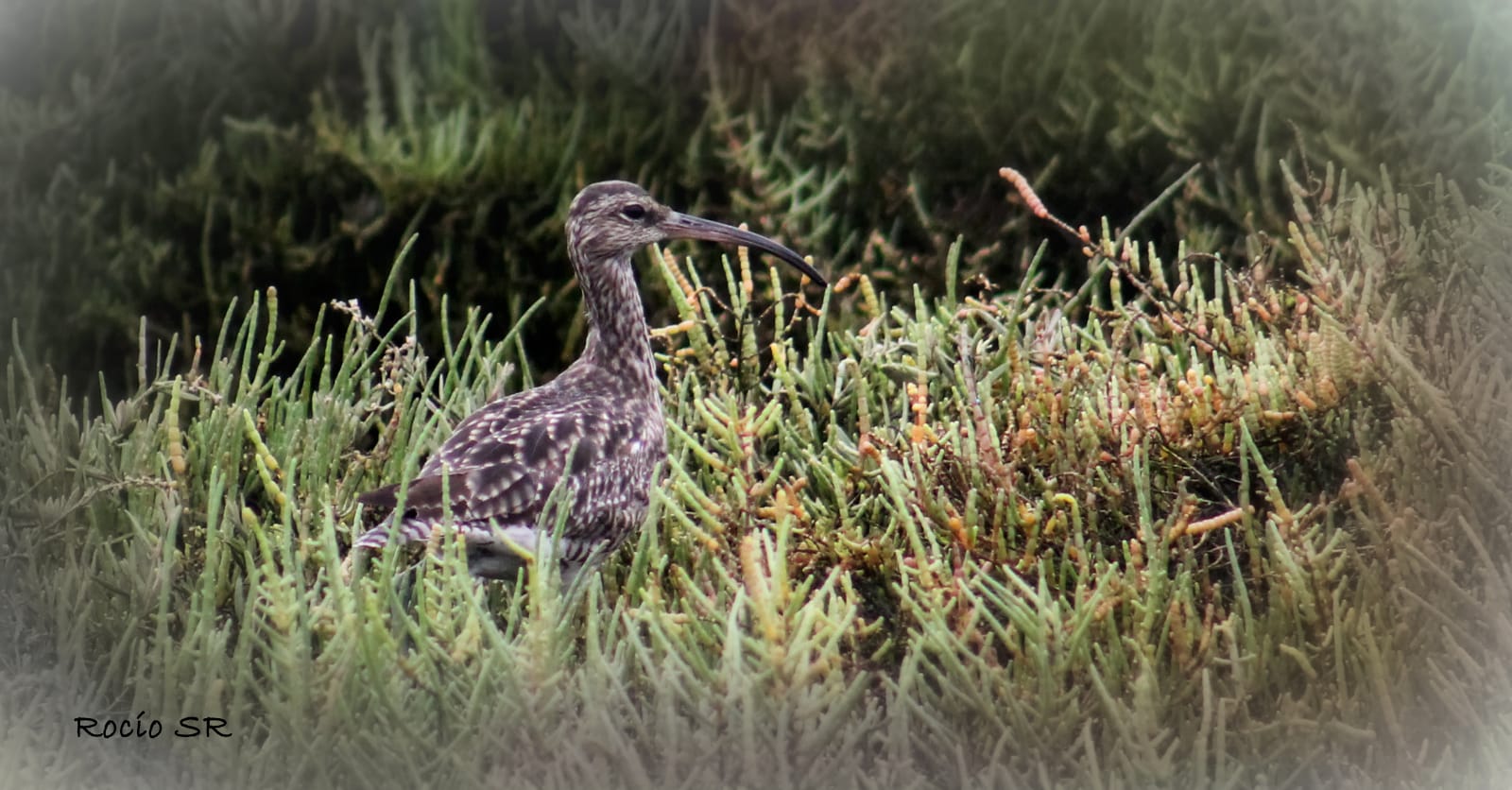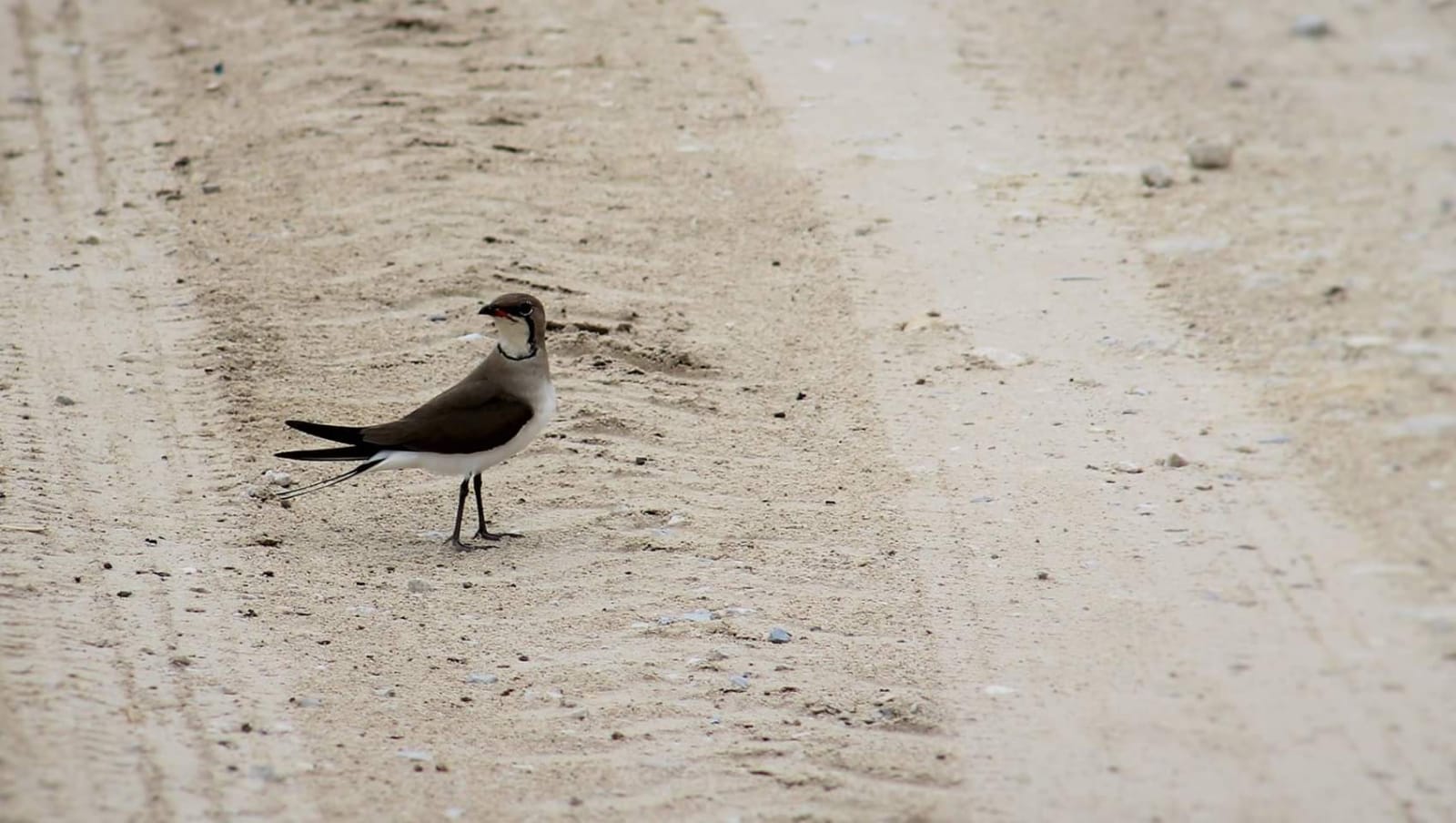We offer you a guide with all the species, all the bird spots and the best birding routes in the best ornithological enclave of the Bay of Cadiz.
9 ROUTES
OF DIFFERENT BIRDING
and all the tips to make the most of the best birding enclave in the Bay of Cadiz.
38 POINTS
OF OBSERVATION
in four different ecosystems and in urban areas, reserve zones and environments with a very high level of environmental protection.
MORE THAN 100
BIRD SPECIES
resident species, wintering species, birds of prey, passerines, waders… and everything you can imagine.
An urban island surrounded by nature
In Puerto Real more than 100 species of birds such as the osprey, the black stork, the black-footed plover, the kentish plover, the white-headed duck, the red-billed chough or the marbled teal are waiting for you in four different ecosystems to enjoy all the richness of the freshwater shellfish of the Natural Reserve of Cetina, the Natural Park of the Bay of Cadiz, the countryside and coastal pine forests surrounding the Natural Park and reserves, and the lagoons in the reserve area of the Endorheic Complex of Puerto Real.
BIRDING ROUTES
The urban center of Puerto Real and the San Pedro River
Tour
You can start your tour at the historic pier of Puerto Real and, at low tide, it becomes a hive of species that come here to feed.
Along the Paseo Marítimo of Puerto Real you have different points from which to observe birds.
The urban environment of the San Pedro River is located next to the Metropolitan Park Marisma de los Toruños and Pinar de La Algaida, a park of the Natural Park, and is an excellent spot for birdwatching despite its urban character.
The Rio San Pedro beach is one of the gateways to the very interesting natural environment of the Metropolitan Park that connects Puerto Real and Puerto de Santa Maria. The Metropolitan Park also hides historical remains such as those of an old foundry or the route of the first railroad line in Andalusia, which linked Jerez de la Frontera with El Trocadero.
What species will I find?
You will be able to observe species such as the osprey, black-tailed godwit, redshank, common tern, kentish plover, Temminck’s sandpiper, curlew sandpiper, spoonbill, black-headed gull, black-billed gull, red-billed godwit, red-billed godwit or the trilling curlew.
In addition, other species such as the Audouin’s gull or the Eurasian oystercatcher are also common in the San Pedro River area.
Observation points:
La Covacha and Trocadero Island
Tour
To visit both areas, you need to contact the Bahía de Cádiz Natural Park to obtain the corresponding authorization.
These are places of special ornithological interest and, in the case of Trocadero Island, of very high historical interest.
Not surprisingly, Trocadero Island is a Natural Site, the highest figure of environmental protection recognized by the Bay of Cadiz Natural Park.
In the case of La Covacha, you have a birding observatory.
What species will I find?
You will be able to observe species such as osprey, spoonbill, red-billed tern, black-tailed godwit, black-tailed godwit, redshank, little tern, kentish plover, Temminck’s sandpiper, black-bellied sandpiper, black-headed gull and black-billed gull.
As a fact, we will tell you that the largest colony of spoonbills in the Bay of Cadiz Natural Park is located on the island of La Covacha.
Observation points:
The Metropolitan Park: La Algaida
Tour
The Metropolitan Park of the Los Toruños Marshes and the Pinar de La Algaida, part of the Bahía de Cádiz Natural Park, is a natural space full of well-differentiated ecosystems: coastal pine forests, marshes, estuaries, sandbanks and episodic lagoons.
The Metropolitan Park also hides historical remains such as those of an old foundry or the route of the first railroad line in Andalusia, which linked Jerez de La Frontera with El Trocadero.
From a birding point of view, you have some interesting infrastructures such as a lookout tower or a hide.
In addition, you can visit the Los Desamparados salt flat, especially interesting from the ornithological point of view, among other things because of its proximity to the rest of the ecosystems that make up the Metropolitan Park.
What species will I find?
The different ecosystems offer you several birding options.
In the Laguna de La Vega, you can enjoy the marsh harrier, the booted eagle, the black starling, the goldfinch, the greenfinch, the greenfinch, the great pipit, the stonechat, the linnet, the Crested Lark or the stilt.
Due to its location between the sandy area and the pine forest, the hide is an excellent option to enjoy birds such as the Iberian green woodpecker, the blackcap, the blackcap or the dartford warbler.
From the lookout tower you will be able to observe the black-tailed godwit, black-tailed godwit, redshank, common tern, kentish plover, black-billed gull, red-billed godwit, Eurasian oystercatcher, Temminck’s sandpiper or curlew sandpiper.
In the Los Desamparados salt marsh you can enjoy all of the above as well as the black stork, spoonbill and osprey.
Observation points:
Las Canteras and Cerro de Ceuta
Tour
We propose here a bird watching in one of the most special corners of Puerto Real, the Parque de Las Canteras.
Las Canteras is a park in the heart of the city, a place for leisure, sports and nature, in addition to the rich history it contains, it is a perfect setting for bird watching in the heart of the city.
The Cerro de Ceuta is the highest point in the urban environment of Puerto Real.
It is surrounded by Roman sites that bear witness to the importance of the city from the point of view of pottery production over several centuries. It contains a lagoon, Los Barreros, which sits on an old material quarry.
What species will I find?
In Las Canteras Park you can observe birds such as the common cuckoo, hoopoe, Iberian green woodpecker, goldfinch, greenfinch, greenfinch, blackcap, blackcap, blackcap, blackcap, robin, nightingale, blackbird or tawny owl.
The surroundings of Cerro de Ceuta and its lagoon are ideal for the observation of kingfishers, reed buntings, bee-eaters, goldfinches, greenfinches, linnets, linnets, martins, swallows, swifts and shrikes.
Observation points:
Birding with History
Tour
We started a new phase of birding; we moved away from the Natural Park, although we are still within its limits.
The three observation points we propose have a story to tell.
The Pinar de Los Franceses was the epicenter and conflict zone during the French invasion of the Bay of Cadiz during the War of Independence; it is the pine forest where the French troops established one of the defense posts for the siege of the Island of Leon.
There is also a birding hide at this point.
The Roman aqueduct that transported water to Cádiz from the Tempul spring, in the current municipality of San José Del Valle, crossed the entire countryside of Puerto Real and, at this point, you can see the remains of one of its towers.
To access the Ossio Mill, you need to contact the company in charge of its management. The visit is worthwhile, it is a tide mill from 1718 in a fairly good state of preservation.
What species will I find?
Here we find an ecosystem of transition between the countryside of Puerto Real and the Bay of Cadiz Natural Park in which there is an abundance of species adapted to saline and freshwater environments, hence in a single environment it is possible to observe a huge variety of species.
In the Pinar de Los Franceses are common the Montagu’s harrier, the black kite, the Iberian green woodpecker, the common woodpecker, the hoopoe, the blackcap, the blackcap, the goldfinch, the greenfinch, the greenfinch, the greenfinch and the loggerhead shrike.
In the surroundings of the Roman Aqueduct, the booted eagle and the buzzard also live.
And in the Ossio salt marsh you can observe the little tern, the kentish plover, the avocet, the black stork, the common redshank, the stilt, the black-tailed godwit, the black-tailed godwit, the flamingo, the spoonbill, the osprey, the osprey and the black-billed, black-headed, yellow-legged and black-legged gulls, as well as grey herons and egrets.
Observation points:
The Bay of Cadiz Natural Park
Tour
This is a nature experience whose key lies in the modification of the landscape that, over the centuries, humans have made in the marshland landscape.
The Bay of Cadiz Natural Park is a complex network of canals, salt marshes and estuaries that is home to a very rich bird life.
We propose a visit that begins in the surroundings of Casines and that, progressively, goes deeper into the ecosystem of the Natural Park. Some of the observation points are freely accessible, but remember that to access La Molineta or the more distant points of the La Esperanza salt flats, you need to contact the company responsible for observation.
Even so, if you want to visit the salt mine of La Esperanza, there is a public access itinerary from which you can make your observations.
As a fact, we will tell you that more than 80% of the nesting pairs of kentish plovers in the Natural Park are found in the Salina de La Esperanza.
What species will I find?
From the cliffs of Casines and La Molineta it will be easy to observe birds such as the wigeon, spoon-billed duck, black stork, black-tailed godwit, black-tailed godwit, redshank, kentish plover, sandpiper, spoon-billed spoonbill, spoon-billed spoonbill, red-billed godwit, black-billed godwit, white stork, common stonechat, common stonechat, blackcap or black-winged warbler, and black-winged stilt. Less abundant, although present, are species such as the osprey, flamingo, black-billed gull and black-headed gull.
Both in La Esperanza salt marsh and in the rest of the observation points of the Park, you can also enjoy the common tern, avocet, pintail, spoonbills or flamingos, but remember that La Esperanza is a key observation point for the kentish plover, bird of the year 2019 of SEO/Birdlife.
Observation points:
The countryside of Puerto Real
Tour
Now we begin a totally different experience from the ornithological point of view.
We say goodbye to the Bahía de Cádiz Natural Park and enter the Red de Cañadas and the Campiña de Puerto Real to enjoy observation points such as the Viña del Flamenco, the Cuesta del Castaño, the Laguna Seca or the Llanos de Guerra.
The vineyard landscape of Puerto Real is something like a fossil preserved over time within the Marco de Jerez. Among leafy paths of pines and wild olive trees, the remnants of vineyards of a landscape encapsulated since the 17th century can be seen.
In the countryside of Puerto Real and in what seems to be an episodic lagoon drained in Roman times, we propose the sighting point of Laguna Seca, or Llanos de Guerra, whose name corresponds to the Guerra de La Vega family, of Cantabrian origin, and creditors of the title of Marquises de la Hermida, owner of these lands in the eighteenth century.
This is the territory of birds of prey, steppe birds, passerines and endemic species such as the nightjar.
What species will I find?
This is the terrain for birds of prey, endemic species such as the Iberian green woodpecker or the nightjar, which inhabit these places.
In an environment of pine forests and undergrowth you can observe nocturnal and diurnal birds of prey such as the booted eagle, the long-eared owl, the Montagu’s harrier, the black kite, the buzzard, the blue-winged owl or the European scops owl.
The Iberian green woodpecker, an endemism of the Iberian Peninsula that is well distributed in the area, abounds in these habitats.
In addition, the elusive common snipe or the diminutive wren are common.
The larks, the larks’ lark or the common ground warbler take advantage of the steppe and cereal cultivation environments.
Hoopoe, blackcap, blackcap, goldfinch, greenfinch, greenfinch, greenfinch and loggerhead shrike take advantage of the forest areas, which they share with nightjars, a nocturnal bird.
Observation points:
The Endorheic Complex and the Salado Creek
Tour
Aquatic territories in an environment that has the highest protection. The Puerto Real Endorheic Complex is classified as a Special Protection Area and is also a Natural Reserve.
It consists of three lagoons: the Taraje and San Antonio, with water throughout the year, and the Comisario, seasonal.
Around the lagoons there is marsh vegetation formed by reeds, rushes, tamarisks, bulrushes, bulrushes, and chestnuts. In its surroundings the scrubland consists of wild olive trees, palmettos and mastic trees.
Both the Endorheic Complex and the Arroyo Salado, the northern boundary of Puerto Real, are two first class birding spots.
What species will I find?
The Puerto Real Endorheic Complex SPA is a hotspot for the observation of birds such as the Malvasia duck, the coot, the brown teal, the brown pochard, the Purple Gallinule, the black-necked grebe or the red-crested pochard.
Among the birds of prey, the Bonelli’s eagle, the marsh harrier, the blue kite, the black kite, the booted eagle, the short-toed eagle or the buzzard.
Flamingos, kingfishers and canasteras can also be seen.
In the surroundings of the Arroyo Salado, the kingfisher, the short-eared owl, the blackcap and blackcap warbler, the booted and Bonelli’s eagle or the black kite are the delight of ornithology lovers.
Observation points:
The Dehesa de Las Yeguas and the Cetina Marshes
Tour
The environment of the Dehesa de Las Yeguas and the marshes and salt marshes of Cetina is a complex ecosystem, a transition zone between an area of pasture forest, a freshwater marsh and a salt marsh with a very high value from the ecological point of view.
The richness and importance of the environment is evidenced by the enormous variety of birds that can be observed and that demonstrate, once again, the immense ecological richness of Puerto Real and its natural spaces.
In the case of the Salina de Cetina, it is necessary to arrange the visit with the company in charge of managing the area.
What species will I find?
The environment of the Dehesa de las Yeguas and the marshes of Cetina is probably one of the best places for bird watching in the province of Cadiz, not only for the environmental quality of the surroundings, but also for the variety and diversity of ecosystems.
The Dehesa de las Yeguas is a perfect place to observe birds such as the Stone-curlew, Short-eared Owl, Booted Eagle, Common Buzzard, Black Kite, Iberian Green Woodpecker, Short-toed Treecreeper, Hoopoe, Black and Blackcapped Warbler, Goldfinch, Little Greenfinch, Greenfinch, Woodchat Shrike, Blue-winged Warbler, Eurasian Scops Owl, European Scops Owl, hoopoe, blackcap and blackcap, goldfinch, greenfinch, greenfinch, greenfinch, loggerhead shrike, blue-winged kite, Eurasian scops owl, wren, sparrowhawk, nightjar, eagle owl, tawny owl or tawny owl.
Just a few meters away, in the Antigua Dehesa de Pedro Esteban, the black stork, peregrine falcon, short-eared owl, osprey, marsh harrier, lapwing, pintail, pintail duck, teal, little teal, common moorhen, Purple Gallinule, little egret or great egret are common.
The Cetina freshwater marsh due to its location as a transition zone and habitat diversity, also provides sightings of birds such as the common moorhen, black stork, marsh harrier, grey heron, spoonbill, black-winged stilt, booted eagle, kentish plover, kingfisher, great egret, marsh tern, marsh tern, teal, pintail, pintail duck, pipit, wagtail, wagtail, wagtail, blue-winged kite, short-eared owl, osprey, lapwing, lapwing and wigeon.
Finally, the Salina de Cetina is a must for the observation of flamingos and spoonbills; ducks such as the shelduck, the teal or the pintail duck; birds of prey such as the blue-winged kite, the short-eared owl, the osprey or the marsh harrier; the black-billed and black-billed gulls, the black-tailed godwit, the avocet, the lapwing, the yellow wagtail, the cattle egret, the Purple Gallinule, the Purple Swamphen or the kentish plover.
The marsh terrapin, kingfisher or great crested pipit, and, finally, the common moorhen, black stork or stilt abound.
Observation points:
38 OBSERVATION POINTS
MORE THAN 100 SPECIES OF BIRDS
Accipitriformes > Accipitridae
booted eagle
Hieraaetus pennatus
RESIDENT
–
Accipitriformes > Accipitridae
eagle percidera
Aquila fasciata
RESIDENT
–
Accipitriformes > Pandionidae
osprey
Pandion haliaetus
INVERNANT
–
Accipitriformes > Accipitridae
marsh harrier
Circus aeruginosus
RESIDENT
–
Charadriiformes > Scolopadae
black-tailed godwit
Silty silt loam
INVERNANT
Pelicaniformes > Ardeiae
bittern
Ixobrychus minutus
ESTIVAL
–
Anseriformes > Anatidae
whistling duck
Mareca penelope
INVERNANT
–
Charadriiformes > Scolopacidae
clear redshank
Tringa nebularia
INVERNANT
–
Charadriiformes > Charadriidae
european lapwing
Vanellus vanellus
INVERNANT
–
Charadriiformes > Recurvirostridae
avocet
Recurvirostra avosetta
RESIDENT
Charadriiformes > Scolopacidae
Temminck’s bindweed
Calidris temminckii
INVERNANT
–
Charadriiformes > Scolopacidae
curlew sandpiper
Calidris ferruginea
INVERNANT
–
Accipitriformes > Accipitridae
blue elanium
Elanus caeruleus
RESIDENT
–
Pelicaniformes > Threskiornithidae
common spatula
Palatea leucorodia
RESIDENT
–
Passeriformes > Sturnidae
black starling
Sturnus unicolor
RESIDENT
–
Galliformes > Phasianidae
common pheasant
Phasianus colchicus
RESIDENT
–
Phoenicopteriformes > Phoenicopteridae
flamenco
Phoenicopterus roseus
RESIDENT
–
Gruiformes > Rallidae
coot
Fulica cristata
RESIDENT
–
Pelicaniformes > Ardeidae
crabeater egret
Ardeola ralloides
ESTIVAL
–
Accipitriformes > Accipitridae
common sparrowhawk
Acciper nisus
RESIDENT
Charadriiformes > Laridae
black-headed gull
Ichthyaetus melanocephalus
INVERNANT
–
Charadriiformes > Laridae
Audouin’s gull
Ichthyaetus audouinii
INVERNANT
–
Charadriiformes > Laridae
beaked gull
Chroicocephalus genei
RESIDENT
–
Anseriformes > Anatidae
white-headed duck
Oxyura leucucephala
RESIDENT
–
Coraciiformes > Alcedinidae
kingfisher
Alcedo atthis
RESIDENT
–
Accipitriformes > Accipitridae
black kite
Milvus migrans
MIGRANT – SUMMER
–
Pelecaniformes > Threskiornithidae
common moor
Plegadis falcinellus
RESIDENT
–
Charadriiformes > Haematopodidae
Eurasian Oystercatcher
Haematopus ostralegus
INVERNANT
–
Charadriiformes > Sternidae
red-bellied chinchilla
Hydropogne caspia
INVERNANT
–
Anseriformes > Anatidae
ruddy duck
Netta rufina
RESIDENT
Anseriformes > Anatidae
brown pochard
Aythya nyroca
RESIDENT
–
Anseriformes > Anatidae
European whistle
Anas penelope
INVERNANT
–
Anseriformes > Anatidae
white jar
Tadorna tadorna
INVERNANT
–
Passeriformes > Alaudidae
terrera marismeña
Calandrella rufescens
RESIDENT
–
Podicipediformes > Podicipedidae
black-necked grebe
podiceps nigrocollis
INVERNANT
–
Charadriiformes > Scolopacidae
trilling curlew
Numenius phaeopus
INVERNANT



